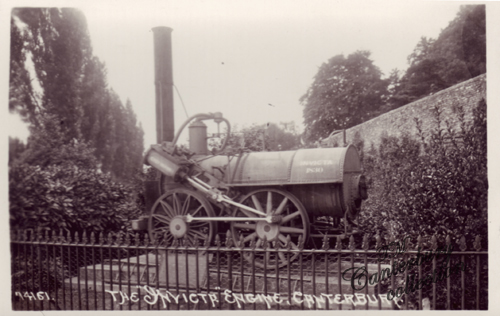
![]()
~ THE INVICTA ENGINE ~
CANTERBURY
The Invicta Engine is now at the Canterbury Heritage Museum
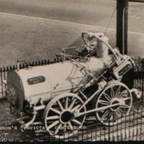
Pictured near the Riding gate
Pictured near the Riding gate - a postcard from my collection - Posted June 28, 1906 from Canterbury. Dr. Bro. Pete. Just a few lines in answer to let you know we are all right & well, no letter from you last week, this is my 2nd ... that .. it is the one after the Rocket this one was on the Whitsable line, do you recognize this chap on the dray. It is .. son Thurogood one of your old pals he is in the Volunteers, and he knows the whole company... when he is marching, such an awkward walker now thats all so close with all ..love George. (Ban.. P. yeoman No. 35,431 78th Battery R. F. A. Nasirbad, India) postmarked Nastrabad July 5 1906
THE CANTERBURY AND WHITSTABLE RAILWAY
Was opened for the conveyance of merchandise and passengers to and from Whitstable, on the third of May, 1830, five years after the establishment of the company, who obtained an Act of Parliament for that purpose. It commences in North-lane, and passes nearly in a straight line to Whitstable, where it terminates at the harbour. It is laid on an embankment of earth to St. Thomas' Hill, where it passes through a tunnel of about half a mile in length, and twelve feet in width; at the south end of the tunnel the rail is continued in an embankment to Whitstable. The train goes backwards and forwards eight times a day. The Railway is now held on lease granted by the proprietors to Messrs. Nicholson and Baylis for ten years, commencing on the nineteenth of February, 1838.

The Invicta Locomotive was built by George Stephenson in 1825 for £635, and used on the Canterbury and Whitstable railway, which opened on May 3, 1830. Robert Stephenson was in attendance on the opening day, and was guest of honour at a dinner held at The King's Head Hotel in Canterbury.
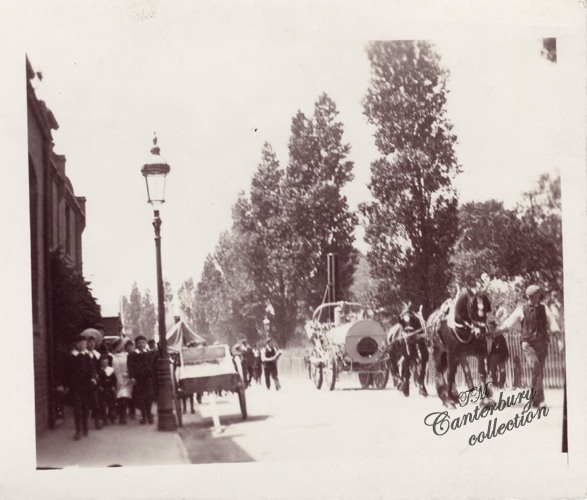
The locomotive was on display at the Franco-British Exhibition. The locomotive was a gift of Sir David Salomons, Bart. who saved it from destruction. Mr. Bennett-Goldney was instrumental in achieving this gift for Canterbury, as Sir David was originally offering to place the Invicta in London.
It was presented by Sir David L. G. Salomons, Bart., 1907.
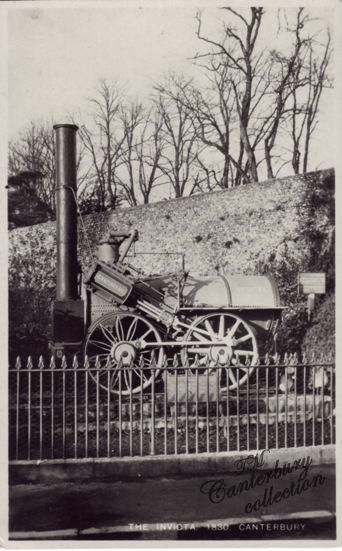
The Invicta was built for the Canterbury and Whitstable line in Kent by Robert Stephenson & Company. English engineer and mechanic Stephenson (1803 - 1859) based the design of the Invicta on that of the "Rocket" that became famous after winning the Rainhill Trials on the Liverpool & Manchester Railway in 1829.
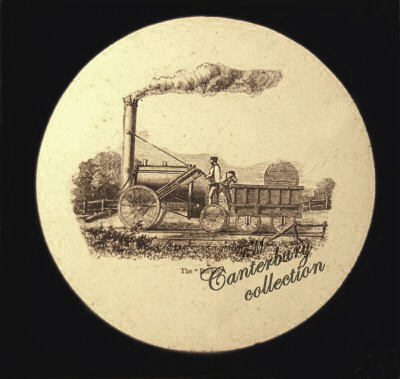
A glass slide in my collection of the "Rocket"
Robert Stephenson & Co. built the locomotive "Invicta" and the line was worked with stationary engines before experiments were made with the Atmosphereic System.
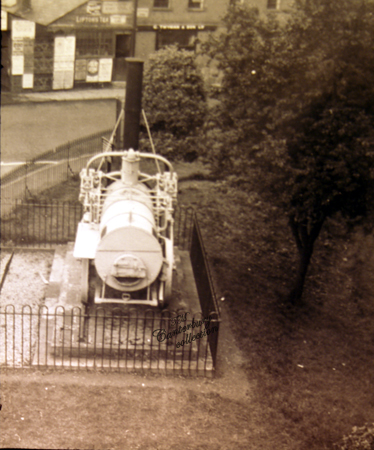
Glass Slide in my collection c.1935
Photograph postcard in my collection (no photographer noted)
Saturday, June 16, 1906 (WTHBH) - The "Invicta" Engine, which has been given to the city by Sir David Salomons, was brought to Canterbury on Thursday and placed on a site at the Riding Gate end of the Moat. The engine, which has been inspected by large numbers of citizens during the past few days, was associated with the early history of the Canterbury and Whitstable railway. It s weight is only seven tons.
The Canterbury & Whitstable Railway, which opened on May 3, 1830, was known locally as the "Crab & Winkle" line. It was taken over by the South Eastern Railway in 1844 and remained in operation until 1952.
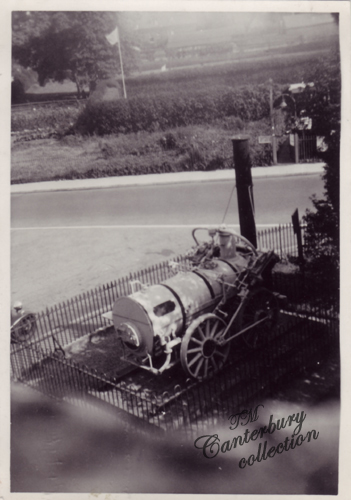
Photograph in my collection unknown date
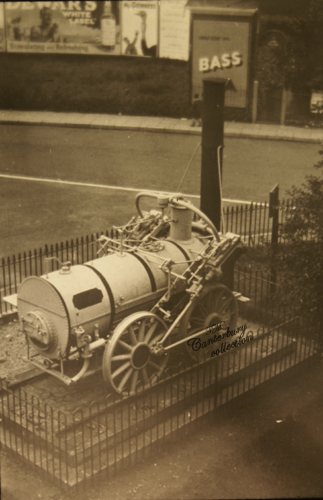
Glass Slide in my collection c.1935
"An ancient locomotive engine, which drew the first train between Canterbury and Whitstable in 1830*, the gift of Sir. David L. Salomons bart. was placed near the site of the Riding Gate in 1906." Kellys Directory 1913 (*May 3, 1830)
The Canterbury & Whitstable Railway was purchased by the South Eastern Railway in 1853.
c. 1980, the Engine was renovated at York for the special events in Canterbury (150th anniversary)
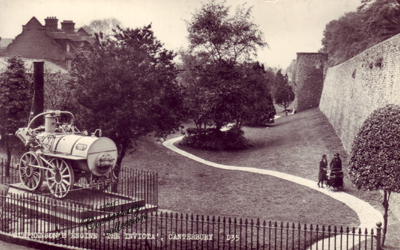
Postcard in my collection
Postcard in my collection, Invicta showing the Peacocks from the Dane John
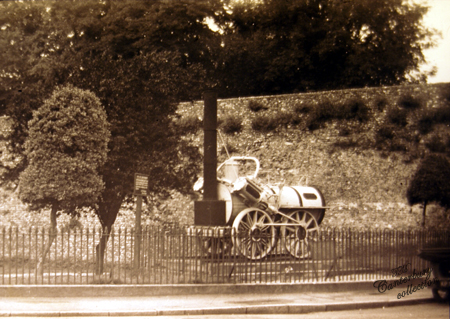
Glass Slide in my collection c.1935
![]()
Application for patent #102, Dated 14th January, 1856... Austen Chambers, Canterbury and William Harrison Chapion, Lynsted, Kent - Improved mode of working railway breaks
© T. Machado 2016
